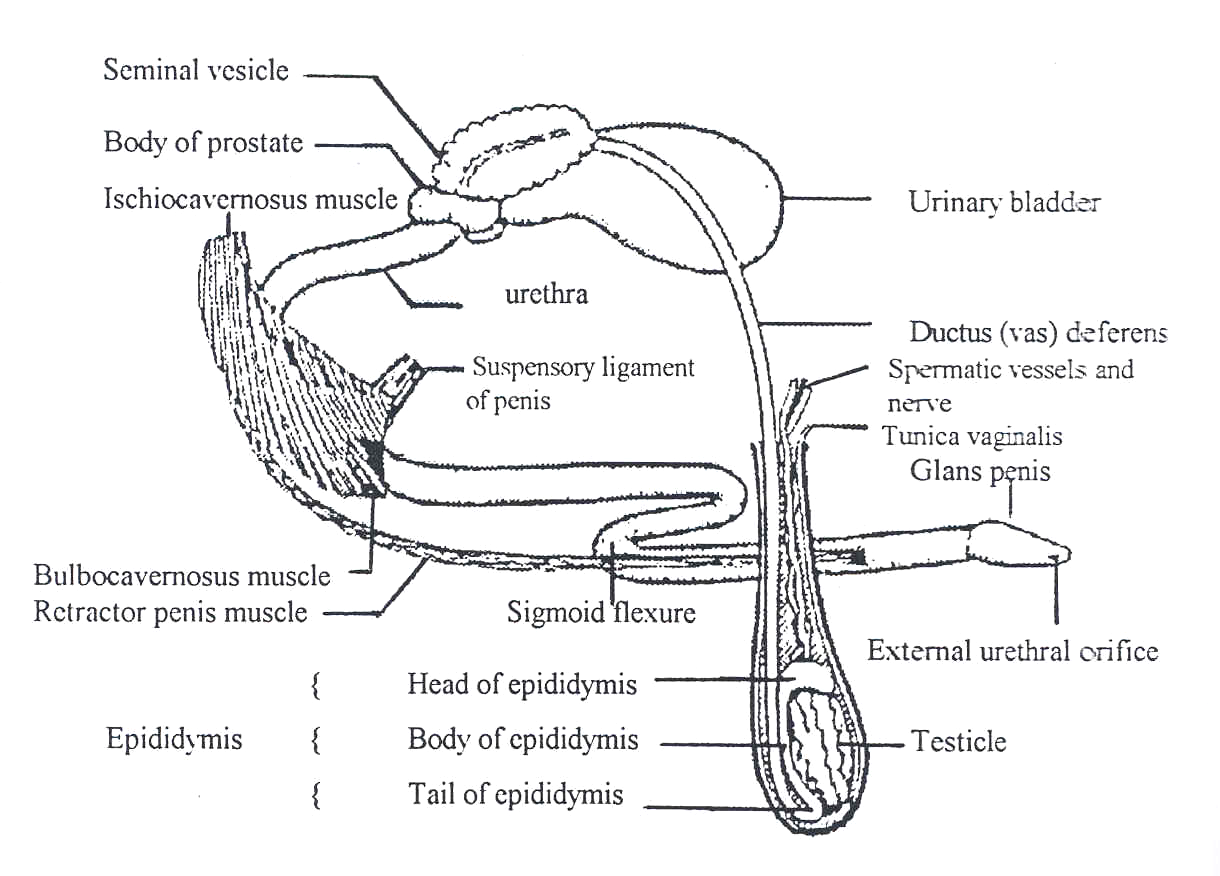The male reproductive system consists of the testis, epididymis, vas deferens, ampullae, urethra, penis and accessory sex glands.


The structure of the male reproductive system
Testis: The testes (two in normal males) are enclosed in the scrotum. The testis itself is oval-shaped and the left and right testes are not always of exactly the same size. Most of the testis is made up of fine tubules in whose walls the spermatozoa are formed. By merging, the tubules become larger and eventually form the epididymis. Spermatozoa undergo their final maturation process in the epididymis and are also stored there.
Epididymis: The epididymus is joined to each testis and consists of a head, body and tail. The head is attached to the dorsal part of the testis. The body, a continuation of the head, goes over into the tail, which lies at the base of the testis.
Vas Deferens: The vas deferens are paired ducts that carry semen from the tail of the epididymis, via the spermatic cord, to the ampullae's in the pelvic cavity.
Ampullae: Basically these are thickenings of the last part of the vas deferens. Like the vas deferens, the function of the ampullae's is to transport semen, to store semen and to secrete spermatic fluid. They contract forcefully to expel the semen during ejaculation. The ampullae's lie on top of the urinary bladder and open into the urethra.
Urethra: This single duct starts at the bladder and continues right through the length of the penis. In the male it transports both semen and urine.
The Penis: The male sexual organ used for mating. It lies in an invagination of the skin called the sheath. The penis of a ruminant consists of strong connective and elastic tissue and has a characteristic sigmoid flexure. The penis of the horse is spongier. The tip of the penis is called the glans penis.
Spermatic Cord: Consists of the cremaster muscles, blood vessels, nerves and vas deferens. The cavity of the scrotal sac is continuous with the abdominal cavity. A network of closely apposed blood vessels cools down the blood going to the testes. This is necessary because spermatogenesis occurs optimally at temperatures approximately 4 degrees Celsius below body temperature.
Apposed: Blood vessels packed next to one another to form a cooling network.
Accessory Sex Glands: The functions of these glands are to give volume to the semen and supply nutrients and protection to the spermatozoa. They include the seminal vesicles, prostate and bulbourethral glands.